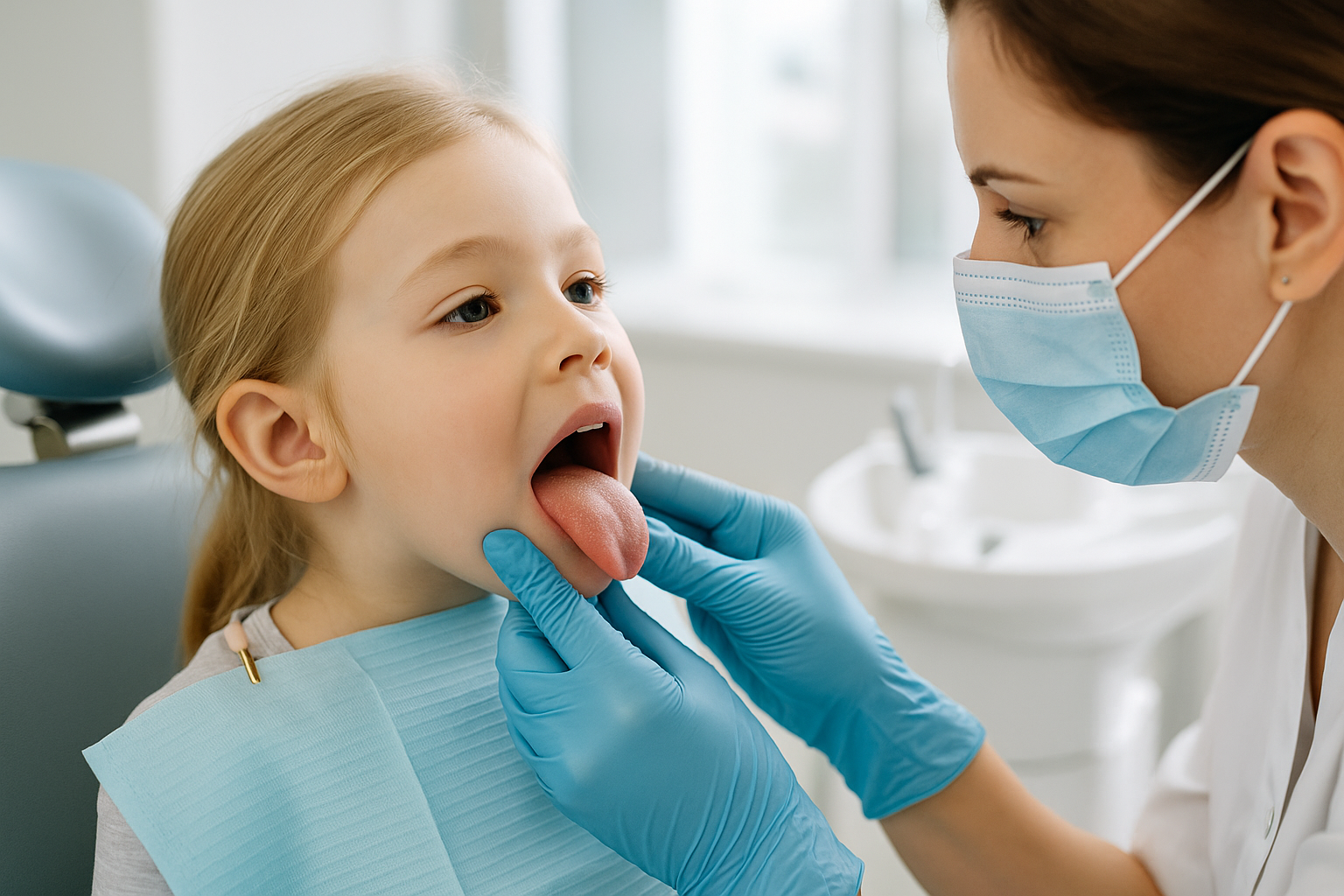The Connection Between Your Child’s Tongue and Their Overall Health

Parents often think of teeth when it comes to oral health, but your child’s tongue can reveal just as much about their well-being. From color and texture to mobility and coating, subtle changes in the tongue often provide valuable clues about a child’s general health. Knowing what your child’s tongue says about their health can help parents spot early signs of imbalance and seek care before issues progress.
At Tooth + Tongue Dental in Walnut Creek, our pediatric dentists look at more than just cavities — we assess the entire mouth to better understand how your child breathes, speaks, chews, and develops.
What Does a Healthy Pediatric Tongue Look Like?
A healthy tongue should generally appear:
- Pink to light red – indicating good blood circulation and vitality.
- Slightly moist – showing proper hydration and balanced saliva flow.
- Smooth with small papillae – the surface should be even, with tiny visible bumps but no deep fissures or patches.
- Flexible and mobile – children should move their tongue freely in all directions without pain or restriction.
If your child’s tongue looks pale, coated, cracked, or unusually dark, it may signal something deeper. Let’s explore the most common signs of tongue problems in kids and what they may mean.
Common Tongue Conditions and What They Might Mean
1. Tongue Tie in Children
An anterior tongue tie occurs when the thin tissue (frenulum) under the tongue is too short or tight, limiting movement. This condition can affect feeding in infants, speech in toddlers, and even oral hygiene in older children. You may notice a notched or heart-shaped tip when your child sticks out their tongue. At our Walnut Creek pediatric dental office, we diagnose and treat lip and tongue ties with precision and care to improve oral function and comfort.
2. White Coating on the Child’s Tongue
One of the most common white coating on child’s tongue causes is oral thrush — a fungal infection often seen in infants or after antibiotic use. It appears as white patches that can be gently scraped off, sometimes revealing red tissue beneath. Persistent thrush in older children may indicate immune imbalance or digestive concerns.
3. Yellow or Thick Coating
A yellowish or thick coating on the back of the tongue can suggest sluggish digestion or gut imbalance. While it’s not always serious, consistent coating can affect breath and indicate poor nutrient absorption — a sign that your child’s digestive system may need attention.
4. Pale or Bluish Tongue
A pale or bluish tongue might point to low circulation or oxygen levels, sometimes associated with anemia or mild respiratory issues. Although rare, persistent color changes should always be checked by a pediatric dentist or physician.
5. Deep Cracks or Fissures
Deep lines or fissures may develop when the body struggles with nutrient absorption or intestinal inflammation. It can also be linked to dehydration or vitamin deficiencies.
6. Dry, Dark Red, or Crinkled Tongue
This can indicate dehydration or issues with how the body processes fluids. Children might feel thirsty, tired, or complain of a dry mouth. Encouraging water intake and routine dental visits can help restore healthy pediatric tongue health.
Why the Tongue Matters in Pediatric Dentistry
Your child’s tongue affects far more than speech — it plays a role in chewing, swallowing, breathing, and even facial growth. That’s why our pediatric dentist in Walnut Creek carefully examines the tongue during every visit. Identifying early signs of dysfunction can prevent speech delays, poor feeding habits, and dental alignment issues later in life.
If you notice any discoloration, coating, or movement restriction, don’t panic — but don’t ignore it either. Early evaluation is key.
When to See a Pediatric Dentist
You should schedule a dental visit if you notice:
- Persistent white or yellow coating on the tongue
- Difficulty moving the tongue or speaking clearly
- Cracks, dryness, or swelling
- A notched or heart-shaped tip when the tongue extends
- Frequent oral infections or bad breath
These can be signs of tongue tie, dehydration, or early infection — all of which are treatable with the right pediatric dental care.
Expert Tongue and Oral Health Care in Walnut Creek
At Tooth + Tongue Dental, we combine modern technology with a gentle approach to provide the best care for your child’s smile. Our team offers comprehensive services including exams and cleanings, fluoride treatments, sealants, fillings, and lip and tongue tie evaluation — all tailored for young patients.
We understand how to make dental visits comfortable and positive, even for children who may feel nervous or have special needs.
Your child’s tongue can tell you more than you think — and we’re here to help you understand what it’s saying. If you’re searching for pediatric dentistry near me or need expert guidance about your child’s tongue health, contact Tooth + Tongue Dental in Walnut Creek, CA today.
📞 Call +1 (925) 949-8427 or fill out the form on our website to schedule a consultation.
Let’s work together to protect your child’s oral health — from teeth to tongue and beyond.





